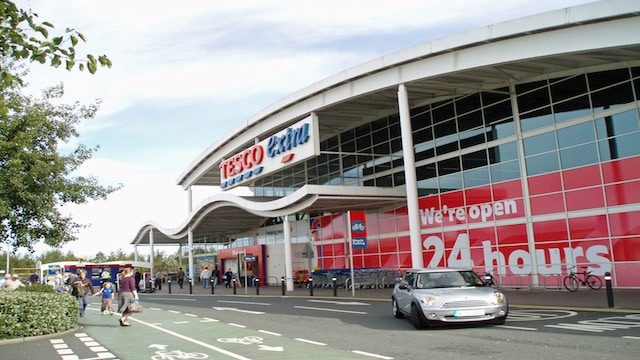With the economic outlook showing few signs of improving, investments that perform well in such conditions look like a better bet. Defensive stocks are one such investment, and Tesco (LSE: TSCO) shares are look particularly interesting right now.
The retail giant’s shares have been on a good run lately, up 23% in around a year coupled with a handsome dividend. Are the good times likely to continue for the supermarket?
I’ll begin by addressing the big story here. Some might call it a story, anyway. Some might call it a scandal. I’m referring to the accusations of profiteering or ‘greedflation’ as supermarkets have been raising prices above already high levels of inflation.
The critics claim such price rises are unwarranted. They accuse big companies of taking advantage of a public used to seeing prices go up by raising prices more than is needed to cover costs.
Tesco denies the claims. The firm points to its reduced margins and net income as evidence. On the other hand, it made billions last year, increased dividends, and started a £750m share buyback. When so many are seeing their weekly shopping bill shoot up, terrific financial results will never be a good look.
Let’s ignore the potential ethical hurdle for a second and move on to the investment case. Are Tesco shares a good buy for shareholders? And could they even be the best defensive stock on the FTSE 100?
Good and bad
Well, the dividend forecast looks respectable. Analysts predict a 4.5% yield for 2024 and a further increase for 2025 – which puts the dividend above the FTSE 100 average. In most years that would be an attractive return, but elevated interest rates mean I can get north of 5% in savings accounts right now. So while it’s still a decent payment, I’d want to see more than just dividends to make it worth my while.
As far as the retail sector goes, Tesco is a dominant player. The shop has a 27% market share in the UK, where next largest competitor Sainsbury’s has only a 15% share. Tesco’s size offers advantages over its rivals in economies of scale and branding.
It’s also to Tesco’s credit that it has retained market share despite the rise of budget supermarkets like Aldi and Lidl. It’s impressive to see the shop keep customers throughout the cost-of-living crisis, although a question mark remains whether the firm can continue to attract budget-minded shoppers.
The supremely popular Tesco Clubcard is perhaps part of the shop’s stickiness. On the one hand, its 20 million members receive discounts and deals in return for loyalty to the supermarket. On the other, I feel the shop might be pushing its Clubcard a little too much.
A buy?
On a personal note, I find it irritating to scan my Clubcard each time I reach the till. And when I’m price-conscious enough to make the effort, the ‘special’ prices are sometimes the same as the standard price at other shops. Negative customer experiences like this could see shoppers spend their money elsewhere.
In all, I see more grievances here than the last time I wrote about Tesco. I do own the shares and I’m not moved enough to sell them, but I’d be reluctant to buy given the numerous issues at the moment.







